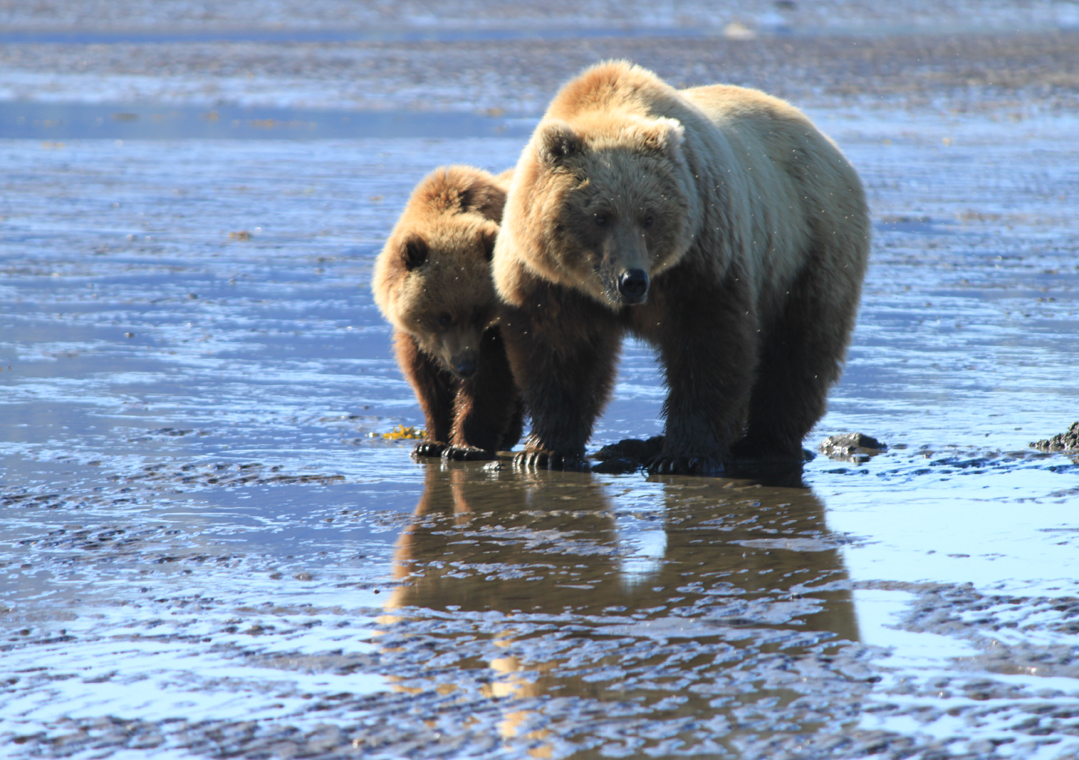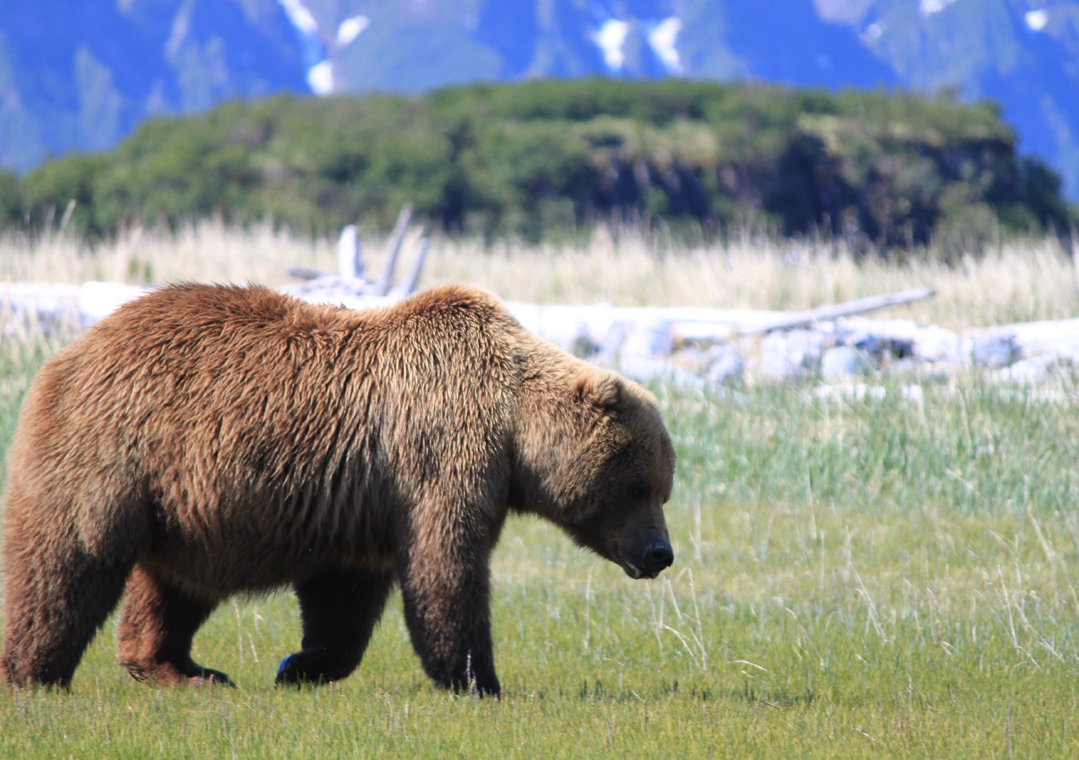
I was seated on the sandy soil among the arrowgrass and pondweed with my back against a two-foot-high bluff. I and seven new acquaintances—fellow bear-viewing tourists at Alaska’s Katmai National Park—marveled at a mama grizzly and her cub, not more than 35 yards away on the other side of a river. She grazed on the scrub, and he rolled and played, acting like the toddler he was, until, from the distance, a large male charged them. Suddenly, the mama bear grabbed her cub by the scruff, placed him on her back, and waded into the water. She swam straight toward us.
“Stay still,” our guide said.

Bear viewing is not a new phenomenon. In the 1950s, Yellowstone National Park rangers installed bleachers around garbage dump sites so visitors could watch the bears scavenge for food. In some Eastern European countries, bears are purposely baited to provide paying humans with a “bear experience.” It’s not conservation biologists’ idea of a good plan. But Dr. Owen Nevin, of CQ University in Queensland, Australia, says respectful bear viewing—done with the bears’ best interests in mind—offers “a fantastic opportunity for people to have a wilderness experience, and to appreciate bears in their natural settings.”
As the sow and cub crossed the inlet toward us, the boar turned on his tail and headed back the way he came. My heart pumped at the spectacle. Male bears, extremely protective of their territory, are known to kill and eat anything that enters their turf, including their own cubs. That means mama bears have to be extra-protective parents, and I soon learned that one of the ways they do that is through us.

Conservation biologist Dr. Barrie Gilbert explains, “In some instances, females with cubs approach people, or leave cubs with people, to avoid infanticide by big males.” Gilbert, who documents such occurrences in Katmai and has for two decades studied bear-human interaction—and the economics behind it—knows firsthand how brutal big males can be. In 1977, he lost an eye to a mauling grizzly in Yellowstone. Yet he has become one of bears’ staunchest defenders. “These are very bright animals,” he says, “and they test our ability to respect and not demonize them.”
Nevin adds, “Bears change how they behave if they haven’t grown up with hunting.” When humans are present, he explains, females will spend…





